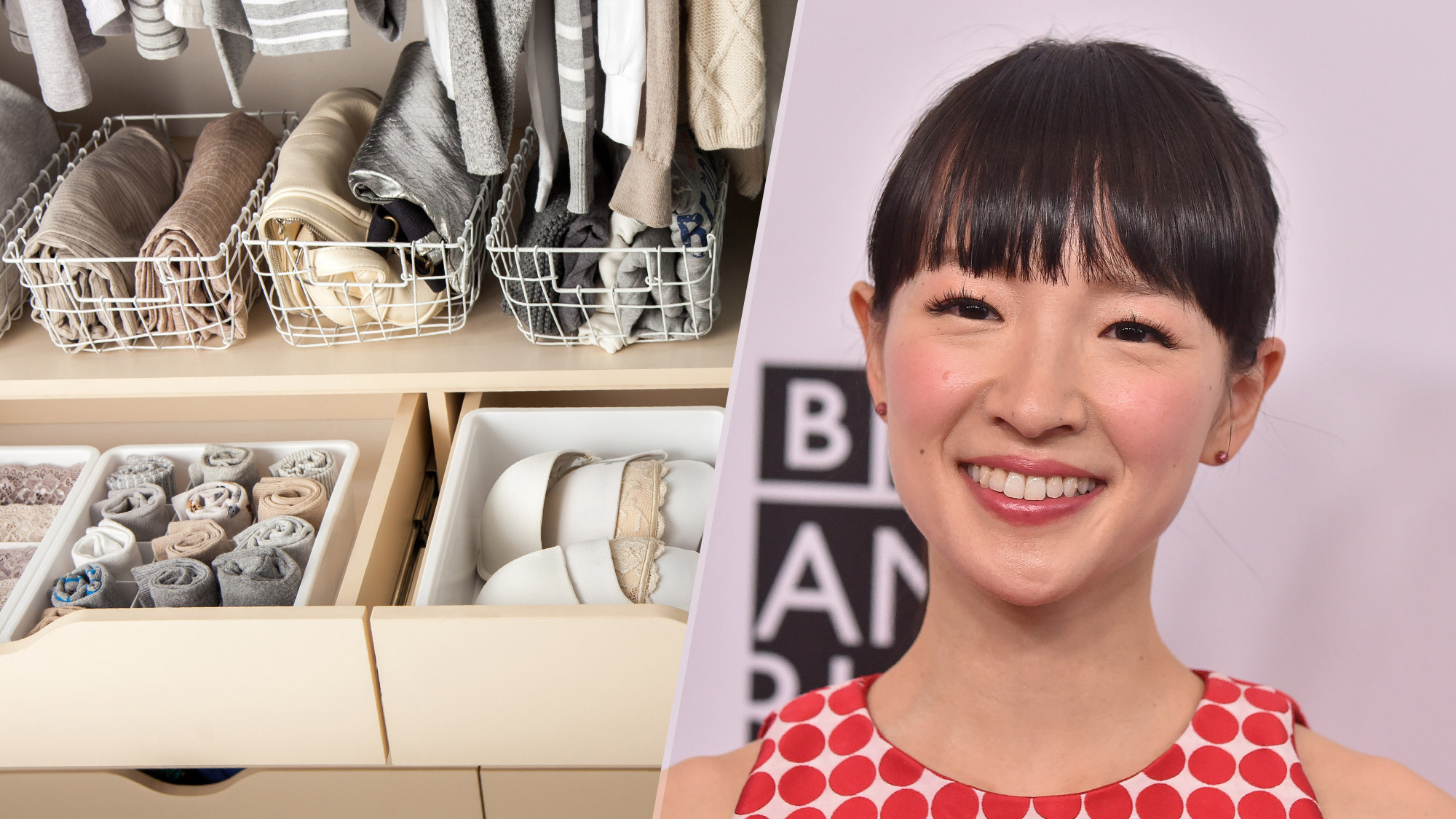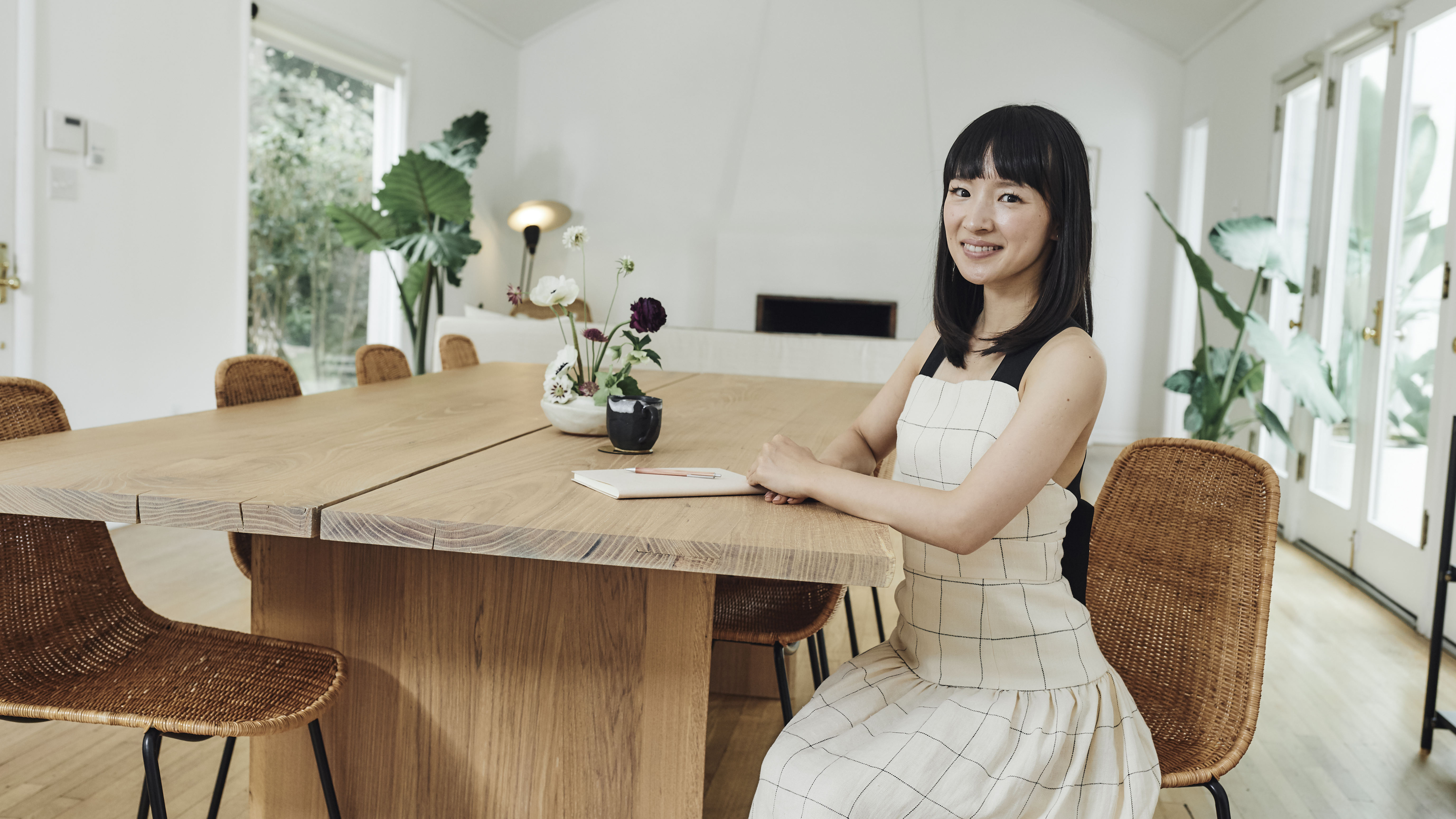I used the KonMari method to declutter my house — and it changed everything
KonMari is perhaps the most famous cleaning method on the web, but does it still hold up?

When Marie Kondo, the professional tidying expert, published her first book, ‘The Life-Changing Magic of Tidying Up,’ she introduced the world to a new outlook on how to create and maintain a tidy home. She takes inspiration from minimalism, but has shaped her own unique KonMari method around the concept of decluttering, reorganizing, tidying, and ultimately transforming your home. Oh, and deciding what to keep based on if it sparks joy. More on that below.
If you haven’t read her book, then you might have heard about or watched her Netflix show, ‘Tidying Up with Marie Kondo’. And, if by some chance you just haven’t heard about her at all, I will explain.
It’s not a new concept, but it’s certainly a trendy one and one that is supposed to alter your entire home in a way that means you won’t have to repeat the method again. Your home will have encompassed the method in such a way that it means you are only surrounded by items you love and nothing surplus. Sounds like a challenge, right? Well, I’ve tried it and I’ll tell you my tale.
What is the KonMari method?
To follow the KonMari method, you tidy your belongings based on asking yourself, 'does this item spark joy?’ and, if it does, you keep it. Tidying your entire home will ultimately leave you with things that you love and have meaning to you. Marie’s method is focused on doing it once and never needing to do it again because you have decluttered and organized with intent.
The six rules of the KonMari method are:
- Commit to tidying.
- Envision your ideal lifestyle and how you want your home and belongings to be and use that as your goal.
- Say thank you and goodbye to belongings you no longer need.
- Tidy by category not location, tidy in order (which we’ll outline below).
- Trust your feelings to discover which items spark joy
Marie Kondo’s goal is to make sure you focus on specific objects from throughout your home, rather than tackling one room at a time. The order she wishes you to follow is; clothes, books, papers, komono (meaning miscellaneous items) and sentimental items.
I tried the KonMari method — here’s what happened to my home
With my six rules in hand, the KonMari method felt like a carefully thought-out plan that I was ready to follow, which is honestly what I need when it comes to tidying. Also, if you’re indecisive, like me, Marie Kondo has published a book called ‘Spark Joy’ (at time of writing, the book is discounted to $5 at Amazon) that has lists covering all sorts of categories of items in your home and what’s best to keep and best to remove from your home.
Get instant access to breaking news, the hottest reviews, great deals and helpful tips.
She tells you how to fold up pretty much every item of clothing imaginable, if you want to. This felt like a step too far for me because I’m sort of a grab-and-go dresser with two small kids in tow. Maybe one day.
Rule One: Commit to tidying
It’s all fair and well saying I need to tidy and maybe shuffling a few bits around my home, but actually making a pledge to say I will tidy using the KonMari method felt like a big step. Firstly, I wanted to make sure I was going to have the time. Turns out there’s never time to tidy, right? So, I just had to go for it.
Rule Two: Envision your ideal lifestyle
Marie suggests envisioning how you want your home to appear by the end of your tidying journey. You can write this in a notebook, create a moodboard, or even a Pinterest page. With little time available, I decided to approach the KonMari method armed with a vision just in my mind which was that, in an ideal world, I’d have less stuff. There would be less clutter. I have a tendency to lose things in my own home, so to not do that would be a pretty lovely way to live.
So, I told myself, with intention, that I would make sure that I reduced the amount of items I owned and I knew that by following the KonMari method, I would hopefully learn how to use my feelings to navigate what this meant for me.
Clothes
First up, to tidy by category, which meant I started with clothes and set about decluttering my closet. I find any time I try to tidy my clothes, I go in with vigor and vim. I say to myself, ‘I hate everything I own’ and claw it out of my closet into a pile on my bed, which becomes a pile on my floor, which becomes my entire room. And then, the dread settles in. I’ve pulled it all out and now I need to tidy it. I think this might be why Marie Kondo picked clothes first. If I could handle clothes, I could handle anything, right?
I stared at my clothes strewn about the place, took a deep breath, and dived in. One-by-one I separated the joy from the mundanity. I’ll be honest, this step took me a few goes. The task was daunting and the pile, while depleting, got shoved to the sides of the room for a few nights before I eventually, and very happily, felt I had accomplished Marie’s first challenge.
Books
Onto books. Now, this step absolutely depends on how much you actually like to read. I like to read… a lot, but I will say that over the years I’ve kept a single-column bookcase for my books and if there’s not room for a book, I either get rid of one or don’t buy another. There were a few I could donate, but all in all, there’s a lot of joy on my bookshelf.
Papers
Next, papers. Marie Kondo suggests, quite unsurprisingly, that some papers like things that are needed indefinitely, things that are needed short-term, and things that need your attention like bills or forms, should not be discarded. It’s the other papers, the ones you’ve been holding onto for years that need to be shredded or recycled.
I will say it’s hard to find any joy in papers, so it came down to practicality and necessity to sift through and sort.
I will say it’s hard to find any joy in papers, so it came down to practicality and necessity to sift through and sort.
Miscellaneous items
Miscellaneous items. The two words I’d been dreading throughout this whole process, but I knew if I’d got this far then I was close to finishing. Komono is a word that encompasses so many of your household items. Again, it’s about gathering them all in categories, laying them flat, and addressing each item either saying thank you and goodbye or knowing, for practical reasons, that you should keep them.
While I don’t have a lot of clutter, all these items were in dire need of organization. For the two-part KonMari method; discard then organize, I made sure everything had a place rather than floating random objects together in their own unnecessary komono drawers.
Sentimental items
Last, but by no means least, were the sentimental items. This was where everything the KonMari method had taught me so far about engaging with my feelings came into full bloom. I’ve never kept old diaries, notebooks, school books or letters. I have kept random artifacts like a keyring I bought my Grandad, a few birthday cards because I’m somehow preserving the handwriting within, and old achievement medals.
The method is not just about discarding everything and living a strict minimalist lifestyle though, it’s about surrounding yourself with items you love. Here, you narrow down your items, but instead of shoving them all in a box and hiding them away, give them pride of place to showcase their importance to your life and home.
The bottom line

When it comes to tidying and organizing, I need someone to tell me what to do and the KonMari method does just that. It was a journey not just to declutter my home, but to alter my entire mindset in regards to how I look at my belongings. This was, by far, the hardest part. As Marie Kondo says, “People cannot change their tidying habits without first changing their way of thinking.”
Tuning into my own feelings about items I owned turned out to be the real process. The method really makes you step back and assess the items you’ve gathered through your life and, for me, it turned out I was holding onto things for years for no apparent reason.
Removing these items made me feel a lot happier and calmer. I didn’t need to close my wardrobe or a kitchen cupboard with a sense of shame knowing I was just shutting the door on a job that needed doing.
I also found that by removing clutter, I was able to bring items that had been hidden away to the forefront for me to enjoy in my own home. Marie Kondo sees tidying as a celebration, not a chore, and by the end of this, I agree.
However, there are plenty of other decluttering methods you can follow. To help you get started you could try the 2-minute decluttering hack, which helps create a tidy home without the overwhelm of doing all your tasks at once. Perhaps you might like to try the 10-10 decluttering method which breaks tasks down into 10 minutes.
More from Tom's Guide
- 3 things you should declutter right now, according to the experts
- We've also found 7 clever tips and tricks for organizing your pantry
- And here are 9 things you’re hoarding, which you should throw away right now

Grace is a freelance journalist working across homes, lifestyle, gaming and entertainment. You'll find her writing for Tom's Guide, TechRadar, Space.com, and other sites. If she's not rearranging her furniture, decluttering her home, or relaxing in front of the latest streaming series, she'll be typing fervently about any of her much-loved hobbies and interests. To aid her writing, she loves to head down internet rabbit holes for an unprecedented amount of time.
